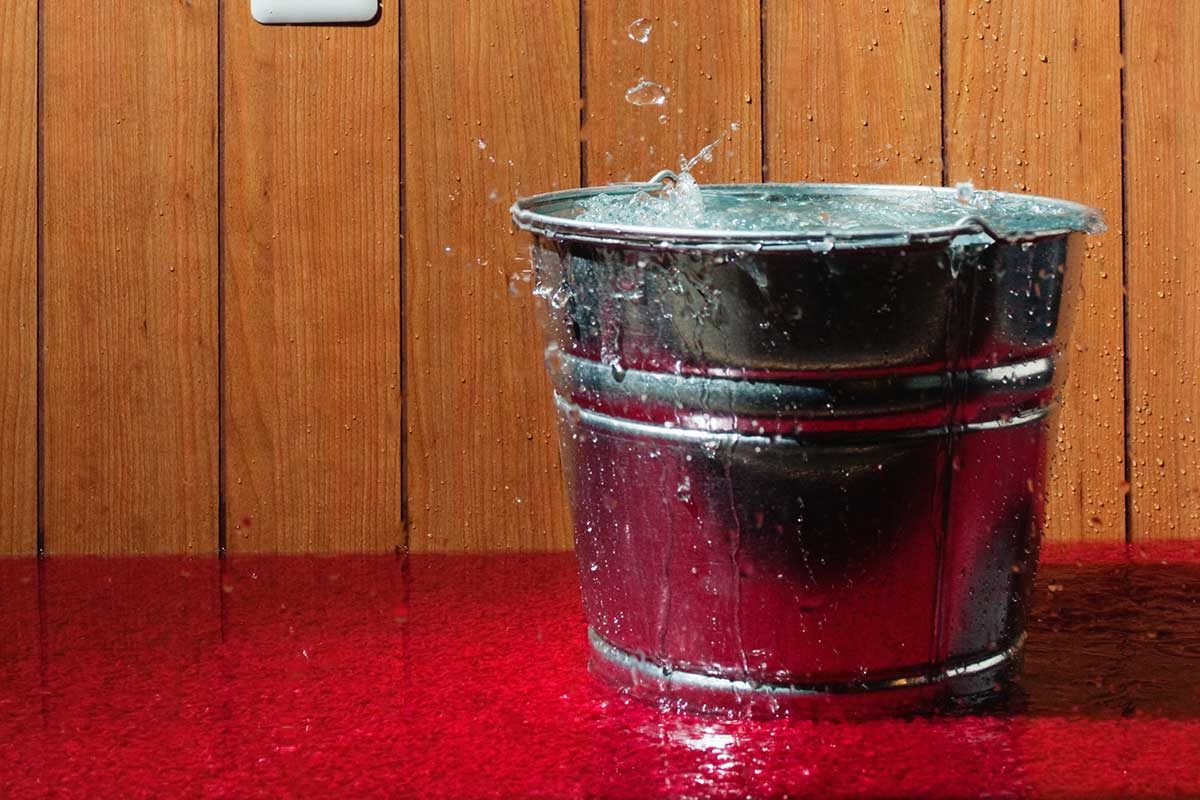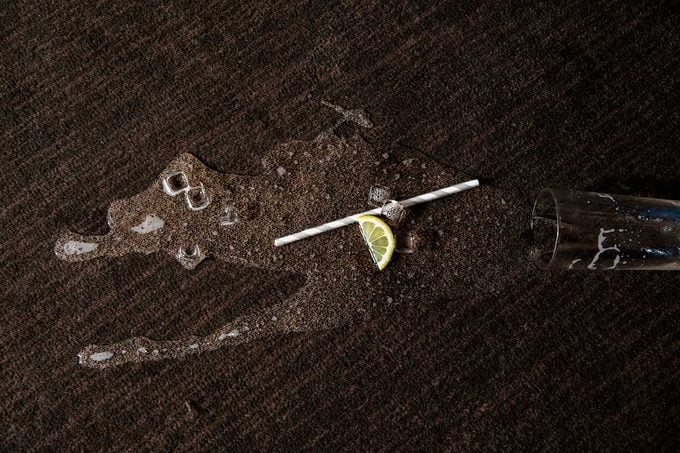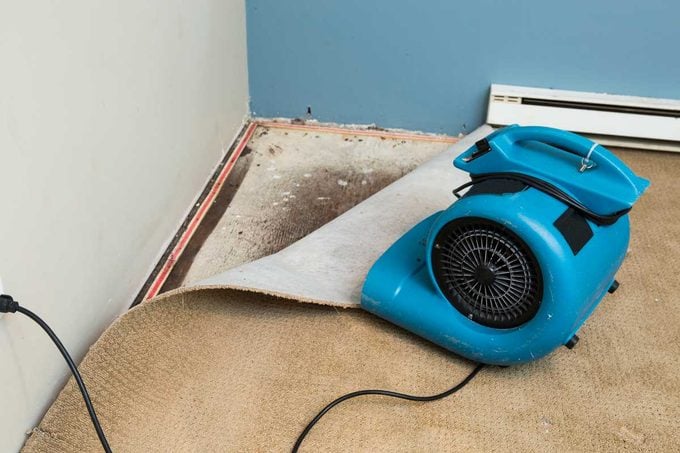Get your wet carpet dry and fluffy again with these tips and tricks, whether you're facing mildly damp or fully soaked carpet.

How to Dry Your Wet Carpet

Dry, fluffy carpet underfoot is certainly a comfort. When there’s a mishap involving water, don’t delay taking action. Water left to linger can cause mold growth among other problems that will zap the comfort right out of your carpet.
But before you act, do a quick assessment of the situation to determine the best next steps. Factors to look at include:
- How saturated is the carpet (damp or soaked)?
- Is the damp area widespread across a room, or limited to a small section of carpet?
- How long has the carpet been damp?
- Where did the water come from? A “clean” source like rain or a broken water line, or a “dirty” source like a flood or backed-up sewer line?
If there was a lot of water caused by flooding or another major accident, it’s a good idea to call your homeowner’s insurance company to inquire about what may be covered. Take photos of the damage in case they ask for documentation.
Each situation will be different, but here are a few guiding principles to keep in mind:
-
Act fast. Don’t let water linger on carpet, even if it’s just a little bit. Mold grows fast, and water can quickly soak through and damage the pad and subfloor.
-
Don’t forget the pad. “Any carpet that has padding should be lifted,” says Diana Rodriguez-Zaba, president of ServiceMaster by Zaba, a certified carpet cleaning company. “Padding will take a long time to dry and it will generate a foul odor that will transfer to your carpet.”
-
Be cautious when using fans, dehumidifiers and other electrical appliances to dry carpet. Keep these appliances dry and out of standing water, and make sure the cords aren’t running across damp surfaces.
Here are some tips for how to dry wet carpet under different circumstances.
On This Page
How to Dry Slightly Damp Carpet

Maybe a large glass of water spilled, or you left a window open during a gentle rain. While this amount of water may seem innocuous, you still need to dry the carpet as quickly as possible.
Fortunately, the process is simple. Run a fan pointed at the wet area to help moisture evaporate. A dehumidifier also works to pull moisture out of the air and dry out the carpet.
“Another option is to get rags and lay them over your damp area,” says Happy DIY Home founder Jen Stark. “Weigh them down with heavy objects like books to soak up as much water as possible.” Be sure to protect the heavy object with something waterproof to prevent damage.
Stark also says you can use a hair blow dryer to dry any lingering moisture. Don’t let the nozzle get too close to the carpet because the heat from the dryer could melt certain types of carpet fibers.
How to Dry Soaking Wet Carpet

A burst pipe or flooding from another source of clean water — not a burst sewer or drain pipe or natural disaster flooding — is certainly a headache. On the bright side, you’re not dealing with sewage or silt. Even so, you still want to take prompt, thorough action to prevent mold growth and lingering odors.
Rodriguez-Zaba says water damage professionals use pro-grade water extraction machines that thoroughly remove water from carpet. But if there isn’t too much water, she recommends renting a large wet-dry vacuum from a local hardware or home improvement store. If you go this DIY route:
-
Read the vacuum instruction manual to ensure you have the right filters and accessories in place for vacuuming up liquids.
-
Once you’ve extracted as much water as possible, lift the carpet and remove the wet padding beneath. “You will need to tear out the wet pad as it will not dry once soaked,” she says.
-
Run a dehumidifier in the room. If possible, open windows to speed up the drying process. Running fans creates air currents, which also aids drying. Be patient as this process can take several days, Rodriguez-Zaba cautions.
How to Dry Carpet After a Flood or Burst Sewer Pipe
Water from a burst plumbing pipe is considered “Category 1” and is generally regarded as clean, Rodriguez-Zaba says. If the water soaking your carpet falls into Category 2 (gray water) or 3 (black water), you’ll need to take extra precautions.
Gray water (waste water that comes from sources like your shower or sink) contains some pathogens. Depending on the source, the carpet may be salvageable, but leave this call to the experts. Water damage restoration professionals can thoroughly dry and decontaminate carpets. You can likely get your carpet dry in these situations, but you can’t remove contaminants on your own.
“Professional water damage restoration companies will need to treat the affected carpet with special antimicrobial treatments,” says Rodriguez-Zaba.
Black water comes from a source like a sewage pipe and is full of harmful pathogens and bacteria. Flooding from a natural disaster can also bring in silt, bacteria and other kinds of unhealthy sludge. If this is the scenario you’re facing, unfortunately, you’ll have to remove and dispose of the carpet to protect your health.
Use extreme caution when removing carpet in this situation. Wear the appropriate protective gear and dispose of the contaminated carpet and padding properly. Check with your garbage service regarding disposal. If the carpet and padding cannot be placed in your collection bin, your service may offer a special pick-up option. Next, check out our guide to outdoor carpets.




















